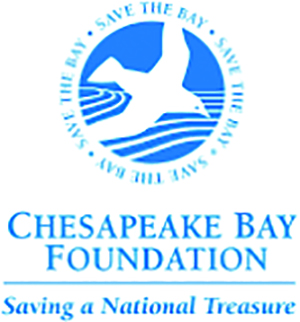By Carol Vaughn —
The Attorneys General of Maryland, Virginia, and the District of Columbia, and the Chesapeake Bay Foundation Monday filed notices of intent to sue the Environmental Protection Agency for failing to enforce the Clean Water Act.
The parties say the EPA has failed to fulfill Clean Water Act requirements to reduce pollution throughout the 64,000-square-mile Bay watershed by not requiring Pennsylvania and New York to develop pollution reduction plans in accordance with the Chesapeake Clean Water Blueprint — in which six states and Washington, D. C., agreed to develop individual plans and milestones to achieve limits on pollution entering the Bay by 2025.
“Protecting and restoring the Chesapeake Bay requires a comprehensive effort by each of the watershed states as well as the EPA,” said Virginia Attorney General Mark Herring, adding, “As the administrator of the Chesapeake Bay Agreement, the EPA must treat each of the partners equally and make sure every state is pulling its weight and upholding its portion of the agreement, but instead, the Trump EPA simply rubberstamped plans that are plainly inadequate. I hope we are able to come to an understanding that is beneficial for all parties, while keeping the health of the Bay at the forefront.”
The blueprint was developed after the Chesapeake Bay Foundation and co-plaintiffs settled a lawsuit against the EPA in 2010, including an agreement for the EPA to develop a provision called the Chesapeake Bay Total Maximum Daily Load, which set out enforceable pollution limits and two-year milestones for Bay watershed states.
The TMDL set limits for pollution equating to a 25% reduction in nitrogen, a 24% reduction in phosphorus, and a 20% reduction in sediment, with a 2025 deadline, according the the CBF website.
The parties intend to sue the EPA “for failing to ensure that the Commonwealth of Pennsylvania and State of New York develop Phase III Watershed Implementation Plans that achieve and maintain the nutrient reductions required of those states to meet the Chesapeake Bay Total Maximum Daily Load,” according to the notice filed by the attorneys general.
According to an EPA analysis, Pennsylvania’s Phase III plan would meet just 75% of its reduction target and New York’s plan would only meet 64% of its reduction target, the notice says.
An analysis by the CBF found economic benefits in the Chesapeake Bay watershed will total $130 billion annually when the blueprint is fully implemented — an increase of $22 billion per year over the amount in 2009, before the blueprint was developed.
Filing a notice of intent is a legal requirement of the Clean Water Act and is the first step toward litigation. EPA has 60 days to resolve concerns before the parties file a lawsuit.
“EPA has failed to uphold its Clean Water Act responsibilities. It has failed to implement the Chesapeake Clean Water Blueprint. This has been ongoing for years, well before the COVID-19 pandemic, and the damage done will last far beyond the pandemic,” said CBF President William C. Baker in a press release.
“Ensuring the implementation of the Blueprint has been CBF’s top priority for over 10 years. It is essential the courts hold EPA accountable. There is no doubt that if Pennsylvania and New York fail to do their fair share the Bay will never be saved,” he said.



